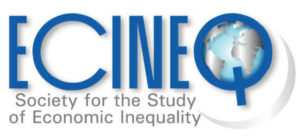Employer power, labor saving technical change, and inequality
Working Paper 2018-466
Abstract
How does employer power mediate the impact of labor saving technical change on inequality? This question has largely been neglected in the recent literature on the wage and distributional consequences of automation, where the labor market is assumed to be competitive. In a simple task-based model, with search frictions which generate an equilibrium wage distribution even with identical firms and workers, we explore the implications of labor saving technical change for equilibrium outcomes. We show that employer power is a crucial determinant of the nuanced comparative statics of technical change. Among a range of results, we show the possibility of Kuznetsian inverse-U relationships between employer power and inequality, and labor saving technical change and inequality. We further show that when employer power is sufficiently low, labor saving technical change can both increase total output and increase wage inequality. With free entry of firms, labor saving technical change leads to both a first order dominating shift in the age distribution and an increase in the Gini coefficient of wage inequality.
Authors: Nancy H. Chau, Ravi Kanbur.
